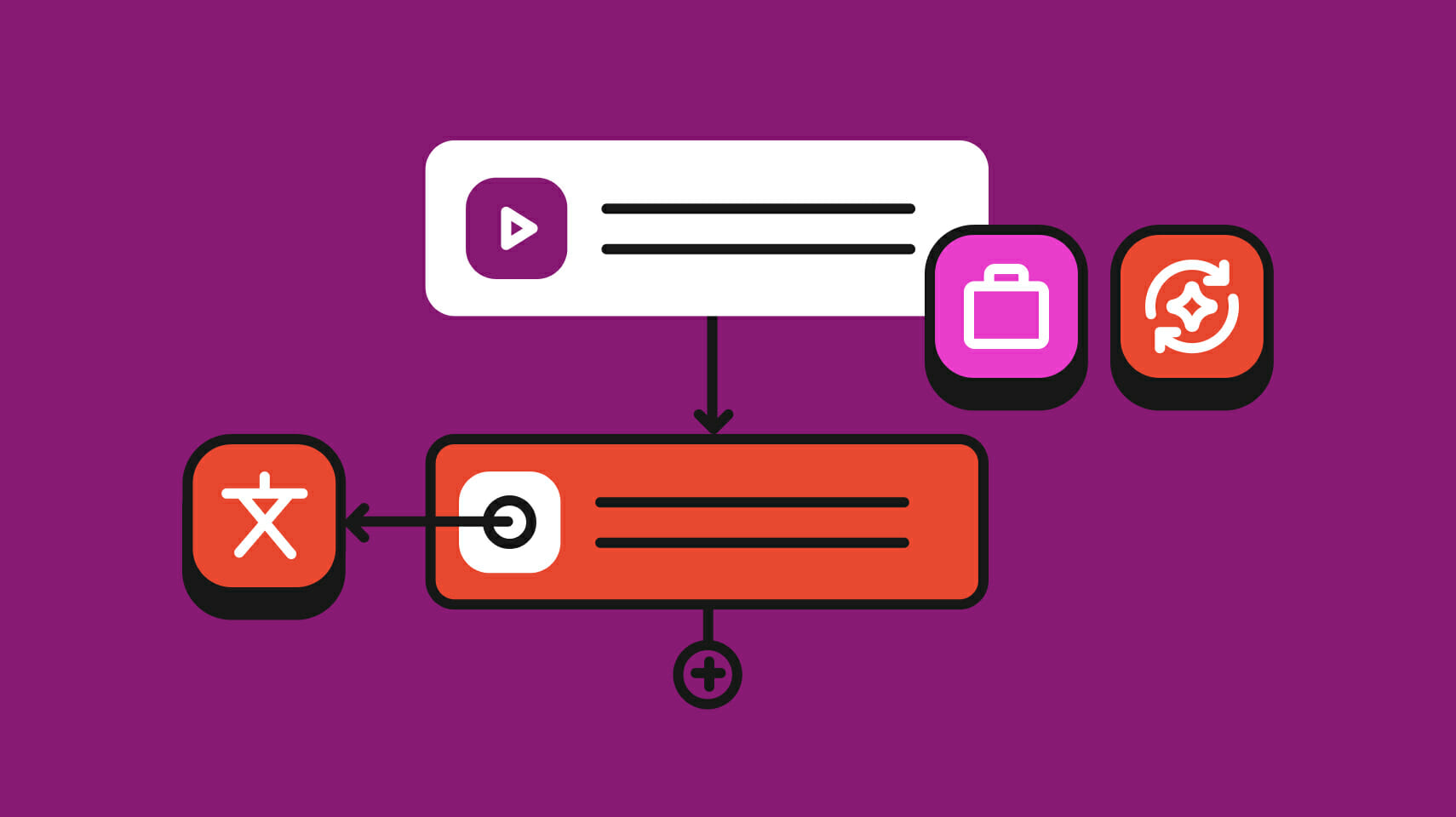Translation management
From Lost in Translation to Resonance: Optimizing Content Translation for Global Success

The idea that content gets you engagement is beyond question—but have you ever wondered what it is about content that makes it so effective? The answer is as simple as it is fundamental: Content works because it has the power to connect with people on an emotional level. Crack the code of what makes a person’s emotions tick, and the rest is easy.
That’s where culture and language come in. We build our emotions in the first place through the culture and language we grow up with, so it’s no surprise that they would be key to how we respond to the content we consume. This is why content translation is worth your time—and also why it can fall flat on its face.
In this guide, we’ll look at the factors that can lead to underperforming content translation and how to make sure your efforts bear fruit.
What is content translation?
Content translation is the process of adapting existing content designed to attract, engage, and retain a particular audience—e.g., blog posts, white papers, videos, podcasts, newsletters, social posts, etc.—for another language or geographic market.
As part of your global content strategy, content translation is the process of taking content aimed at your existing customers and making sure it achieves the same results with a new audience in another language.
The content translation process is key for companies looking to open up new markets using the power of content, but it can result in missed opportunities if not approached correctly.
Why content translation matters
Content translation matters to international businesses for the same reason that any business uses content marketing: Content helps build credibility, trust, and authority. Content is how you attract people to the front door of your business, and it’s what makes them want to stick around after they get a look at your wares—or not.
For businesses looking to expand internationally, this is especially important because it can help them cross cultural divides to reach customers they otherwise couldn’t—customers who want exactly what they have to offer.
The right content can attract new prospects through search engines, social channels, email campaigns—and even from referrals from existing customers! It can also retain your current customer base by strengthening their experience on your site and building your reputation as an expert in the industry.
How to make content translation work
The effectiveness of multilingual content marketing depends, in large part, on how well you connect with your customers and their needs. In this sense, content translation is as much about adapting your content as it is about knowing your audience.
Just like content in the original language, content in other languages needs to be relevant and tailored to suit your audience’s expectations. For that to happen, your entire business model needs to be adapted to accommodate a new market’s expectations.
That’s where traditional translation falls short. Even if you have the best translators on the planet working for you, if you don’t know what customers really want or if you can’t deliver it to them, your content will fall flat. The answer? Localization.
How localization can improve content performance in foreign markets
Localization is the practice of adapting your content specifically to your audience’s needs—not just their language.
Localization is a process that goes beyond translation and into the realm of translation plus adaptation. And it’s not just content that you adapt—you also adapt your entire business model and marketing strategy to take into account aspects such as:
- The product portfolio
- The pricing strategy
- The messaging
- The branding
- The value proposition
- The distribution channels
- The customer service
And that’s just the tip of the iceberg. That’s a lot of changes to make; it isn’t easy, but it’s well worth it.
Now, specifically in terms of content, localization can involve things like
- Repackaging and reformatting content for different audiences
- Adding, removing, or changing content—e.g., images, video, graphics, the color palette—to make it work for a particular market
- Allowing your audience to provide feedback and share the content with others as appropriate
- Adapting SEO elements like keywords, alternative text, meta titles, and meta descriptions to make your content findable locally
- Feedback loops to let you know what’s working (or not)
- Researching the competition and leveraging local insight to give you an edge
All of these changes ensure that the content is relevant and interesting to your audience in their own language and within the context of the market they live in.
Where to start with content translation
What you need, first and foremost, is a strategy. What are your goals for expanding into another market? What do you already know about your audience in that market? What format best suits this market—text, audio, or video?
You should aim at integrating translation into the company’s operations from the beginning. Translation is not a task to be assigned to the junior marketing interns after you’ve already launched your content. Translation should be an integral part of the process, from idea formulation to execution.
Here are a few things to consider when creating a content translation strategy.
Establish clear goals
If you’re not sure what success looks like, it’s hard to know when you get there. Be specific: Who are you targeting? What are their interests? How will they find your content? Which competitors are already succeeding in this market?
Goals should also include identifying the key metrics that you’ll use to measure your content’s performance. If you’re not measuring it, how will you know whether or not it worked?
Set up a process for translating content
It’s one thing to translate your content, but it’s another entirely to make sure that the right people are involved at every step. How will translators know what needs to be translated? How will marketers know when the translations are finished? When will designers get their hands on the translated content? And, of course, who will be responsible for implementing all of this?
Figure out the answer to all of these questions before you start, and ensure that everyone in your company is on the same page.
Research your market
Knowing your customers inside and out is crucial. One of the biggest mistakes companies make in content translation is assuming that the content they’re producing in English will be effective for any audience in any country, just because it’s well-written and engaging. Good writing isn’t enough when you don’t know what your readers’ interests are.
With the use of data-driven market research, you can identify what your customers are looking for, why they want it, and how to deliver it to them.
Implement a local SEO strategy
If there’s no one searching online for what you have to offer, your content won’t be relevant. That’s where local SEO comes into play.
Culture plays a big role in how users search, so you need to do some keyword research to understand which keywords people use when looking for products like yours and structure your content in a way that makes it findable.
Decide who is responsible for the translation process
If you don’t assign someone in your company the authority to manage this process, it’s unlikely to get done right. Appointing a translation or localization manager can be a good idea for large companies; in smaller ones, the marketing manager can be responsible for localization.
When you centralize all localization work within one department, whether it’s marketing or localization, you make it easier for all stakeholders to collaborate and ensure consistency across all your efforts.
Go beyond translation
As we’ve seen, you need localization rather than traditional translation because multilingual content is about more than just written words. What about your website design? Your blog layout? Your product descriptions? All of these elements should be adapted to reflect the needs and preferences of your audience—regardless of region or country.
Use software that integrates with your existing marketing platform
Don’t reinvent the wheel by creating a separate system for managing content translations. You can use a translation management system (TMS) that integrates with your existing marketing technology, such as your CMS and CRM.
A TMS keeps the localization process on track by acting as an intermediary that ensures your translations are of high quality and consistent throughout, across languages and regions. It makes it easier to manage project requests, document templates, terminology, file storage, translation memory matching, machine translation tools, reporting features—the list goes on.
What may kill content translation
As you may have concluded from the points above, there’s more to content translation than simply converting text from one language to another. As a result, the most common reasons for failed content translation initiatives involve:
- Unclear, unattainable, or non-existent goals
- Poor market research including lack of understanding of the audience and their needs
- The “PR” push, or doing translation for the sake of having it done, without any regard for the market or product-market fit
- No dedicated localization manager or team to manage the process, with too little process and no accountability for results
- No localization strategy in place to marry translation and localization with existing planning and the company’s bottom line
- Siloed, fragmented processes—not having a centralized system in place
- Not using the right tools to integrate localization with existing marketing technologies
- The “build it and they will come” approach—without a local-market SEO strategy, it’s unlikely that potential customers will find you online
- Poor quality—unprofessional translation, inaccuracies, errors, or mistranslations
You have the power to make content translation work
Content translation doesn’t have to be difficult. You just need the right strategy and technology in place at the beginning—and then it’s all about execution.
Make sure that every time you roll out new content in another language, you take into account the needs of your target market. Make localization an integral part of your content strategy, not something that’s tacked on at the end. Create a process that has accountability at every stage and integrate it with other aspects of your online marketing efforts like SEO.
And possibly the most important piece of advice: Make sure that you’re leveraging the wealth of technology at your fingertips by using a translation management system that automates your translation workflow. Doing so will save you time, money, and effort while empowering you to deliver strong content that reaches the right people.
Last updated on September 12, 2023.





